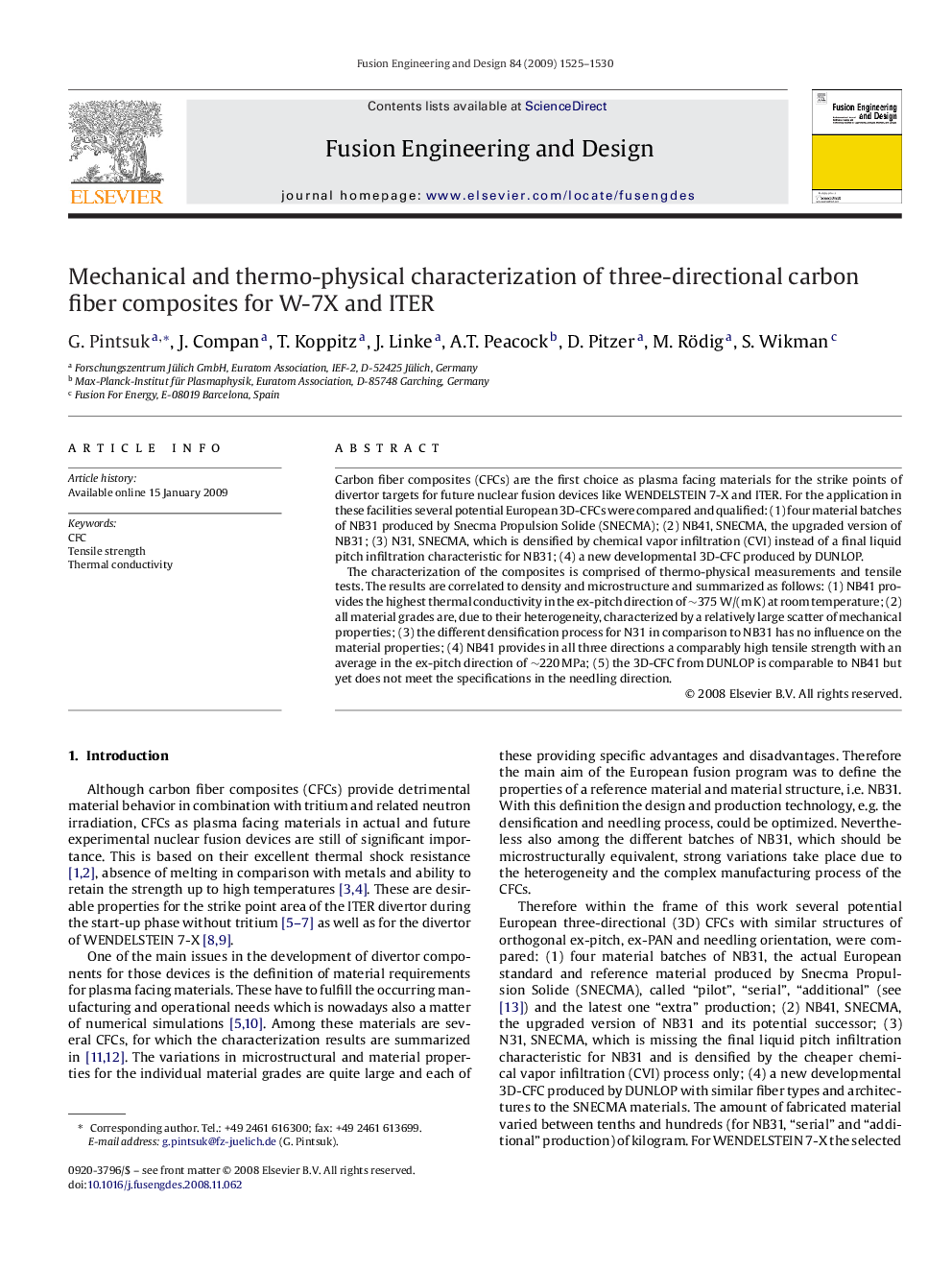| Article ID | Journal | Published Year | Pages | File Type |
|---|---|---|---|---|
| 273184 | Fusion Engineering and Design | 2009 | 6 Pages |
Carbon fiber composites (CFCs) are the first choice as plasma facing materials for the strike points of divertor targets for future nuclear fusion devices like WENDELSTEIN 7-X and ITER. For the application in these facilities several potential European 3D-CFCs were compared and qualified: (1) four material batches of NB31 produced by Snecma Propulsion Solide (SNECMA); (2) NB41, SNECMA, the upgraded version of NB31; (3) N31, SNECMA, which is densified by chemical vapor infiltration (CVI) instead of a final liquid pitch infiltration characteristic for NB31; (4) a new developmental 3D-CFC produced by DUNLOP.The characterization of the composites is comprised of thermo-physical measurements and tensile tests. The results are correlated to density and microstructure and summarized as follows: (1) NB41 provides the highest thermal conductivity in the ex-pitch direction of ∼375 W/(m K) at room temperature; (2) all material grades are, due to their heterogeneity, characterized by a relatively large scatter of mechanical properties; (3) the different densification process for N31 in comparison to NB31 has no influence on the material properties; (4) NB41 provides in all three directions a comparably high tensile strength with an average in the ex-pitch direction of ∼220 MPa; (5) the 3D-CFC from DUNLOP is comparable to NB41 but yet does not meet the specifications in the needling direction.
